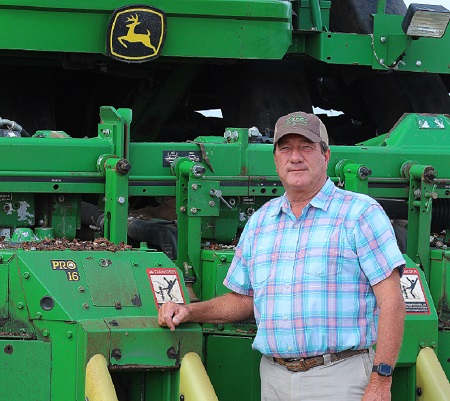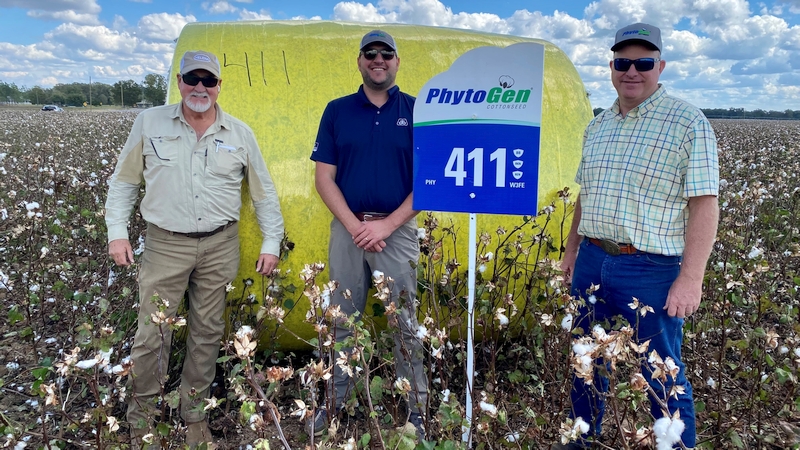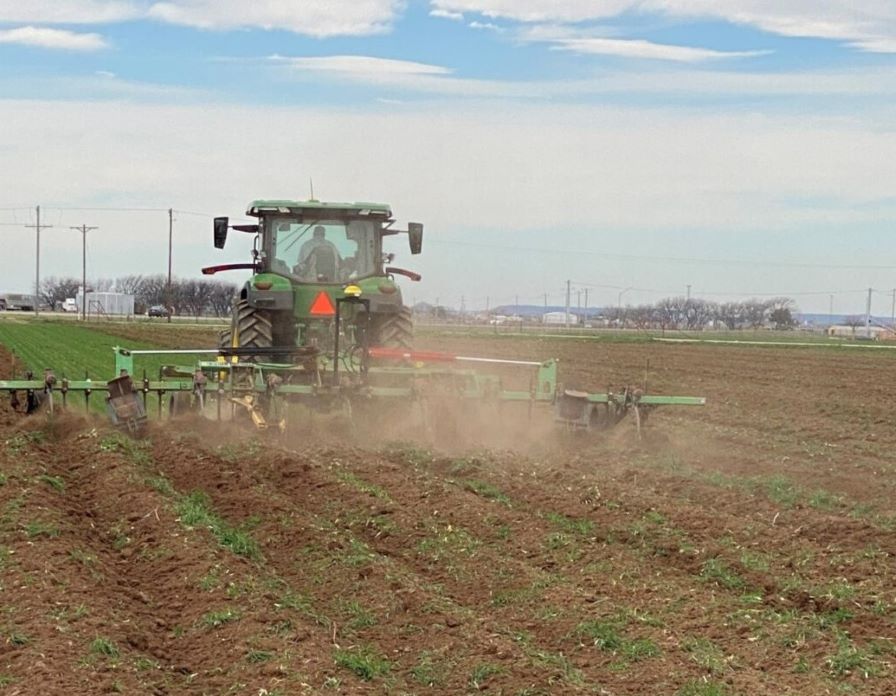Taking Advantage of an Early Start in Georgia
There has always been a debate about when is the best time to get started planting cotton. For Poulan, GA, grower Ken Hall, an early start has won the day. Hall’s father started farming cotton in the early 1970s, and he took over the family business in 2001. They farm just under 3,000 acres of cotton and peanuts in rotation.
This season, Hall started planting cotton on March 25. Many of the growers in his area typically wait until mid-April or early May to get rolling.
“When a lot of people around here are planting corn, I am already planting cotton, he says. “Had it not been for a big rain at the end of April, we would have finished planting our cotton before May 1. That is 1,450 acres of cotton in the ground.”
When to Pull the Trigger
While a standard recommendation is to wait until 4-inch soil temperatures have reached at least 65°F for three days and the forecast shows a warming weather trend, Hall applies a different measure.
“I start monitoring soil temperatures toward the end of March,” he says. “When those temperatures start rising above 62°F, I begin to monitor it daily at the 2-inch and 4-inch levels early in the morning. When I start seeing it maintain 62°F or better at the 2-inch level, I start thinking about planting.
“Even if we have a cool morning and the air temp drops down into the lower 50°F even upper 40°F range, but the soil doesn’t drop much — say to around 60°F — I feel pretty comfortable planting. That is helped by the PhytoGen varieties we grow now that have such great seedling vigor.”
Even with several chilly mornings in April and early May, Hall says his early planted cotton is doing fine.
He starts planting his dryland acreage first to take advantage of typically better soil moisture in late March and April. He says his dryland usually out-yields later planted dryland cotton in his area, especially if there’s drought in August and September.
Last season, his dryland cotton yielded in the 1,000 to 1,100 pounds per acre range. “We had some that exceeded 1,100 pounds where cotton planted in late May and early June in this area was less than a bale per acre.”
Getting a Jump on Pests
With the amount of vegetable production in his area, Hall says whitefly pressure can be extremely high toward the end of the cotton crop. The pressure begins to build in late August and September.
“If I can get my cotton planted and mature before that pressure starts to build, it can save me a tremendous amount of money,” Hall says. “Whitefly insecticides are expensive, and a lot of times, it takes multiple applications to keep them at a manageable level.”
Hall believes the fast start also helps with early season weed pressure. “Planting early helps you get ahead of the weeds a little better, because the weeds don’t really start exploding until May and June when it starts to heat up.” he says.
He’s also found that early-planted cotton requires less PGR applications than cotton planted later.
Beating the Weather
While area growers were spared last season, the previous three years were plagued by late season tropical systems that blew in during the middle of harvest. It’s one more rationale Hall uses for planting early. In 2016 Tropical Storm Hermine, in 2017 Hurricane Irma, and in 2018 Hurricane Michael passed through Southwest Georgia.
“Hurricane Irma was bad, but Michael was a lot worse in this area,” Hall says. “But I was able to get 80% of my cotton harvested before Michael came through. You could say we are very aggressive planting and harvesting to avoid getting caught by late season storms.”
Some growers have questioned Hall about the danger of having boll lock and rot, if early planted cotton begins to open in August and September when it is hotter and wetter.
“Nobody knows what the late season is going to bring, so I am not going to miss a prime planting opportunity even it is in late March and early April,” he says. “I have no control over what happens in August and September, but I do have control over when I plant when the conditions are right. Nobody has a crystal ball but planting early saved a lot of my cotton when those hurricanes rolled through here.”
Hall’s success with early planting has other growers taking notice. His yields and quality suggest its worth consideration. He is a two-time winner of the Georgia Cotton Quality Award and a winner of the Peanut Profitability Award.
“I have a lot of eyes on what I am doing here,” he says. “Folks tell me what I am doing must be right, because it is working. I tell them the only way to get ahead is to get started. And that’s what we do – early.”
Precision agriculture plays an important role on Ken Hall’s operation, especially during planting and for water management. We asked him what his favorite tools were.
1: Trimble Precision IQ: Hall utilizes the guidance system on his tractors for precision planting. The technology also helps reduce driver fatigue during operation.
“We recently added the latest upgrade to the units that links tractors together,” Hall says. “So, when we make adjustments on one tractor, it links to our other two tractors and can automatically makes those adjustments. I like that a lot.”
2: Watermark Soil Moisture Sensors: The technology helps Hall make more informed irrigation decisions based on soil types across the farm. The sensors are easy to install and maintain and can monitor moisture at multiple depths in the soil.












